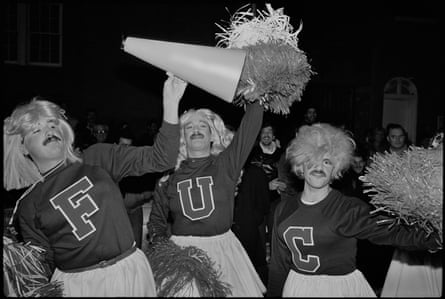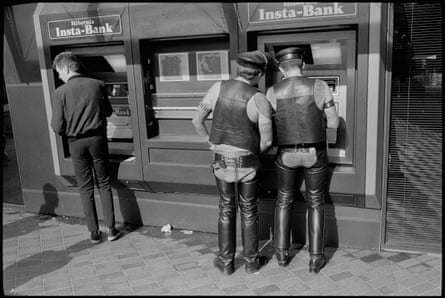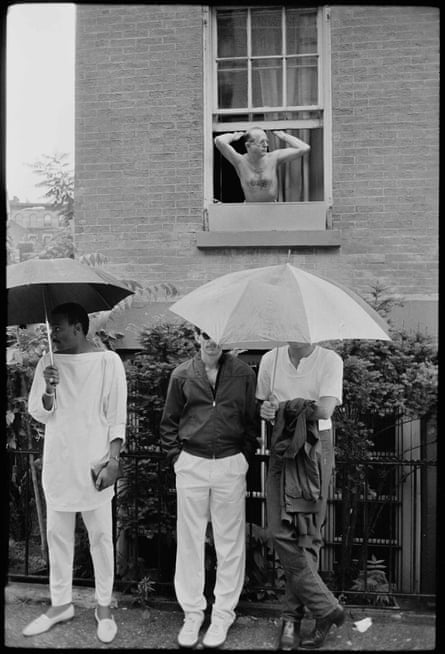When Nicholas Blair first showed me his photographs for the book Castro to Christopher: Gay Streets of America 1979-1986, I had many thoughts. But, I admit, the one that pushed to the forefront right away was: “Why am I not in any of them?”
I was only half joking.
Back at that benighted time in LGBTQ+ history – way before anyone added the “T”, the “Q” or the “+” – the streets that Blair’s title refers to, San Francisco’s Castro District and New York’s Christopher Street, were occupied by what would now seem like a shockingly circumscribed group of people. On any given weekend on Christopher Street, Manhattan, where I could reliably be found, nearly every person you saw you either knew, recognised, or had already had sex with. While Gay Pride marches would bring tens of thousands of us to the streets every year, on all other days our footprint was relatively small, insular and every bit as site-specific as the title of Blair’s book suggests.

In the era of these photos, nearly everything that was commonly considered “gay” either happened on these streets or was connected to them. Buttressed by the bars, those streets were the only places where you could reliably meet significant numbers of people like you, announce yourself to them by your gaze and your gait, tease and befriend them, spawn a community with them and, naturally, meet them for sex. The more adventurous among us even had sex with them right then and there.

The result was that those streets of San Francisco and New York had a special frisson and freedom. They were as teeming with eros and interaction then as today they are isolating and alienating, thanks to our smartphone myopia. Luckily, that special world can be seen in all its heat, humour and intimacy in Blair’s photos. One image in his book has elements of all three: in the foreground two figures are kissing. Behind them stand three men, each looking in a different direction yet all driven by the same goal – to see and be seen. Each is presenting and searching, preening and praying. Their expressions may be soldier straight and hunter cold, but below lies fire.
The humour and edge of those streets is seen in high relief in an image of two leather daddies in full chaps drawing money from an ATM. It presents a perfect contrast between mundane and profane. And, make no mistake, a joyous embrace of the profane had a profound role in many of our lives in those years, way before such unimaginable things would occur as same-sex marriage, parenthood or even personhood. Back then, the gay world still had the thrill of outlaw culture, though, sadly, that came with the consequence of making us targets for everything from cruel taunts to life-threatening bashings. While Blair’s photos focus on celebrating the culture, anyone who was on the scene at the time could see beyond the frame, where danger always lay in wait. While it was common to hear the term “faggot” hurled in your direction back then, I never heard or read the term “homophobia”. There’s a simple reason for that. Most people back then didn’t think there was anything the least bit wrong in treating gay people with revulsion.

Despite that, those times brimmed with possibility and excitement. The era of these photos gains even more poignancy since it straddles the time just before Aids and the years when the disease threatened to wipe out gay people entirely. For that reason, and others, it’s impossible not to look at these photos without a profound sense of loss. But that’s hardly all I feel when I look at them. I also feel warmth and wit. I feel invention and defiance and, to quote Saint Donna (Summer), “I feel love”.

In the end, I do see myself in these photos, reflected in my connection to a sensibility and an experience that, however far removed from the current world, remains embedded in something eternal: history.
Castro to Christopher: Gay Streets of America 1979-1986 by Nicholas Blair, with an introduction by veteran music critic Jim Farber, is published by powerHouse books
https://news.google.com/rss/articles/CBMihQFodHRwczovL3d3dy50aGVndWFyZGlhbi5jb20vYXJ0YW5kZGVzaWduLzIwMjMvanVuLzE4L25pY2hvbGFzLWJsYWlyLXBob3RvZ3JhcGhzLWxnYnRxLWdheS11cy1hbWVyaWNhLTE5ODBzLWNhc3Ryby10by1jaHJpc3RvcGhlci1ib29r0gGFAWh0dHBzOi8vYW1wLnRoZWd1YXJkaWFuLmNvbS9hcnRhbmRkZXNpZ24vMjAyMy9qdW4vMTgvbmljaG9sYXMtYmxhaXItcGhvdG9ncmFwaHMtbGdidHEtZ2F5LXVzLWFtZXJpY2EtMTk4MHMtY2FzdHJvLXRvLWNocmlzdG9waGVyLWJvb2s?oc=5
2023-06-18 09:00:00Z
Bagikan Berita Ini

















0 Response to "‘I feel love’: Nicholas Blair’s images of gay joy and defiance in 80s America - The Guardian"
Post a Comment